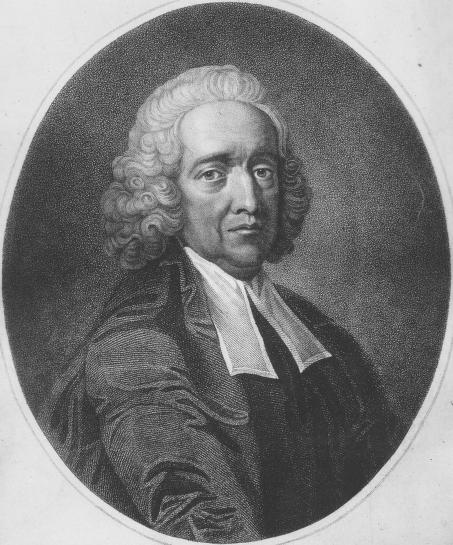<Back to Index>
- Physiologist Stephen Hales, 1677
- Writer and Philosopher Hildegard of Bingen, 1098
- 6th President of Israel Chaim Herzog, 1918
PAGE SPONSOR

Stephen Hales, FRS (17 September 1677 – 4 January 1761) was an English physiologist, chemist and inventor.
Hales studied the role of air and water in the maintenance of both plant and animal life. He gave accurate accounts of the movements of water in plants, and demonstrated that plants absorb air. Hales discovered the dangers of breathing stale air, and invented a ventilator which improved survival rates when employed on ships, in hospitals and in prisons.
Hales is also credited with important work in pneumatic chemistry, especially the development of the pneumatic trough, used for collecting gases generated in laboratory experiments.
Hales most important invention was the surgical forceps.
Hales is best known for his Statical Essays. The first volume, Vegetable Staticks (1727), contains an account of numerous experiments in plant physiology — the loss of water in plants by evaporation, the rate of growth of shoots and leaves, and variations in root force at different times of the day. The second volume (1733) on Haemastaticks, containing experiments on the "force of the blood" in various animals, its rate of flow, and the capacity of the different vessels.
Stephen Hales died on 4 January 1761 in
Teddington at the age of 84. He was buried under the
tower of the church where he had worked many years.
From the Nobel Prize in Medicine acceptance speech given by Werner Forssmann in 1956:
"The credit for carrying out the first catheterization of the heart of a living animal for a definite experimental purpose is due to an English parson, the Reverend Stephen Hales. This scientifically interested layman undertook in Tordington (sic) in 1710, 53 years after the death of William Harvey (1578 – 1657), the first precise definition of the capacity of a heart. He bled a sheep to death and then led a gun - barrel from the neck vessels into the still - beating heart. Through this, he filled the hollow chambers with molten wax and then measured from the resultant cast the volume of the heartbeat and the minute - volume of the heart, which he calculated from the pulse - beat. Besides this, Stephen Hales was also the first, in 1727, to determine arterial blood pressure, when he measured the rise in a column of blood in a glass tube bound into an artery."—Werner Forssmann
The genus of trees Halesia is named after him.